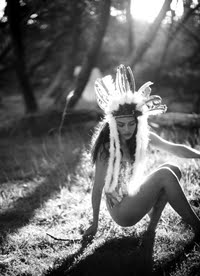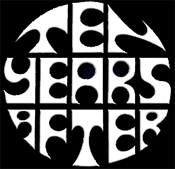

Skiffle music arose in New Orleans in the early 1900s. Similar in many ways to jug band music, it could be played on homemade instruments (like a washtub bass or a rub board) along with guitars and other stringed instruments, and could feature a fluid number of members of differing musical skills. Just as String Band music allowed for a variety of ‘Appalachian’ styles to be cheerfully integrated, Skiffle music similarly wove together jazz, blues and ragtime.
Skiffle music had largely disappeared from America by the 1940s, but rather unexpectedly it became a popular music style in England in the 1950s. Lonnie Donegan set off the British Skiffle craze in 1956 with his version of Leadbelly’s “Rock Island Line.” The simplicity of Skiffle music and the minimal equipment requirements allowed many 60s rock stars to form their first teenage skiffle groups (for example, the Quarrymen, formed in 1956 by Liverpudlian teenagers Paul McCartney and John Lennon.
Forming a Skiffle Band in Berkeley in 1966 may seem a somewhat artificial choice, but almost all Californian and East Coast folk musicians had made a conscious choice to adopt a musical style that was far from their own personal experience, such as Bluegrass, Delta Blues or “Old-Timey” music. All the “folkies” of the 60s, from Bob Dylan and Jerry Garcia, down to every nameless college kid, were driven by a mixture of scholarly sincerity and blind love. A Skiffle Band was indeed a rarer artefact, but Berkeley prides itself to this day on being more advanced and more obscure than its contemporaries, so a band performing in a musical style forgotten in America since the 40s and outdated in England since the 50s makes perfect sense. In any case, The Jabberwock, on Telegraph and Russell, was in South Berkeley, so it was that much nearer to New Orleans.
The Cleanliness and Godliness Skiffle Band featured the vocals of ‘Dynamite” Annie Johnston and Phil Marsh, with all the band members providing instrumental support and vocal backup. While the group had a somewhat conventional instrumentation for a Jug Band (washtub bass, harmonica, a few guitars, some banjo or mandolin), the songs were done in a swinging, jazzy style, much closer to New Orleans than Mississippi or Chicago.
The original line-up of the Cleanliness and Godliness Skiffle Band was:
Annie Johnston playing guitar and vocals; Phil Marsh on guitar and vocals; Will Scarlett playing harmonica; one time Jabberwock manager Danny Paik on guitar; Carlin Arriola on banjo and guitar, and Richard Saunders on bass
The exact instrumentation can not be determined from this distance, and in any case, there was plenty of switching of instruments and group vocals. According to surviving photos, Paik and Arriola mostly played guitars and other stringed instruments. Everybody in the band played a variety of kazoos, jugs and percussion instruments. Saunders (an Instant Action alumni) had played bass at the first “electric” Country Joe and the Fish performance (on November 6, 1965).
Bio info from Chicken on a Unicycle
- Goofus (Kahn / King / Harold)
- Where Do We Go From Here (Marsh)
- Dr. Jazz (Melrose / Oliver)
- Chinese New Year Waltz (Mull / Daniels)
- Lotus Blossom (Turner)
- Altitudinous Youthful Deviant Number 468 (Do It Up) (Bradley)
- Who Will Buy The Wine (Mize)
- Love's A Game (Johnston)
- Carol's Song (Johnston / Saunders)
- Tonight You Belong To Me (Rose / David)
- Stop My Heart With Joy (Johnston)
- Let Me Loose (Johnston)
- Annie Johnston - guitar, mandolin, woodblocks, vocals
- Hank Bradley - fiddle, mandolin, harmonica, vocals
- Phil Marsh - guitar, vocals
- Brian Voorhees - harmonica, guitar, vocals
- Richard Saunders - bass
- Chicken Hirsh - drums (on Where Do We Go From Here, Carol's Song, Stop My Heart With Joy and Let Me Loose
- Gary Salzman - dobro (on Who Will Buy The Wine))
- Judy Linsky - flute (on Carol's Song)























































































0 comments:
Post a Comment